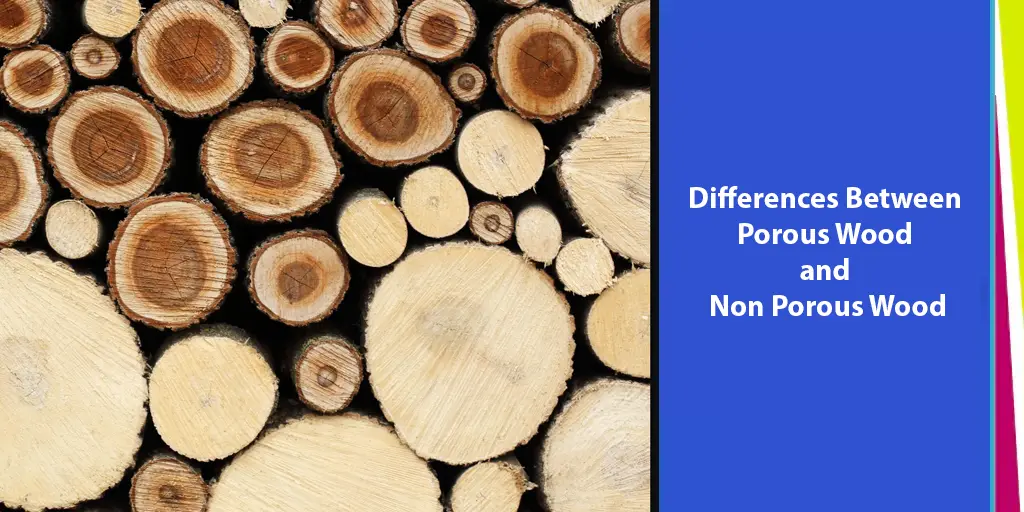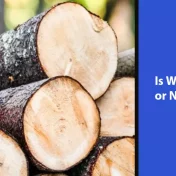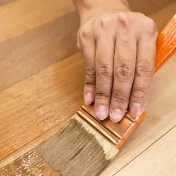Understanding the difference between porous and non-porous wood types enables you to make better woodworking decisions for your specific applications.

Whether you need wood for floors, furniture, or crafts, porosity impacts performance, durability, and maintenance requirements. Let’s explore:
- The factors that determine a wood’s porosity
- How to identify porous versus non-porous wood species
- The impact of porosity on various wood uses
- Maintenance techniques tailored to each wood type
We’ll cover oak, maple, cherry and other common wood types, providing clear guidance you can trust to select and care for the right wood for your needs.
Our confident, knowledgeable and impartial analysis aims to give you a solid foundation for making the best wood choices backed by facts, not opinions.
Clear communication and factual transparency are core principles we uphold in serving the woodworking and DIY community.
After reading this article, you will possess a comprehensive and sophisticated comprehension of the distinct characteristics and uses of porous and non-porous wood.
Armed with this knowledge, you will be equipped to make informed purchasing decisions and adopt appropriate wood care practices for many years to come.
Let’s get started! We’ll start by defining wood porosity and its importance.
Understanding Porosity in Wood
You can trust our in-depth knowledge of wood porosity to inform your wood choices. Wood porosity results from microscopic spaces within the wood structure called pores.
Pores vary in size and quantity depending on the wood species, age, and growing conditions. Larger, more numerous pores make wood porous, making it ideal for absorbing moisture and liquids.
Porous woods like oak and hickory have:
- Visible pores that give it a coarse-grained appearance.
- A rough, uneven texture
- High moisture absorption due to larger pores that take in liquids easily
In contrast, non-porous woods like maple and cherry contain:
- Invisible pores too small to see
- A smooth, consistent texture
- Low moisture absorption because small pores resist liquid penetration
The combination of pore size, quantity, and distribution ultimately determines a wood’s porosity level—high, medium, or low—which impacts its different properties and uses.
Our impartial, fact-based analysis sheds light on this hidden but crucial wood characteristic to help you select the right wood species based on performance requirements, not aesthetics alone.
We present this knowledge in a clear, transparent manner, so you can feel confident relying on our accurate, nuanced explanations of wood porosity to guide your woodworking and DIY projects for lasting success.
Now that we’ve defined wood porosity and covered the key factors that distinguish porous from non-porous wood, let’s identify common examples of each wood type.
Identifying Porous Wood
Look to our accurate, objective assessments to identify the best porous wood species for your needs. Porous woods, including:
Oak – One of the most porous woods, oak has large open pores that give it a coarse-grained appearance. Oak is a popular choice for rustic furniture, flooring and outdoor use due to its ability to withstand moisture and wear.
Hickory – Another highly porous wood, hickory has prominent pores that lend it a pronounced grain. Hickory is known for its hardness, strength and durability, making it suitable for applications like tool handles and flooring.
Larch – This softwood has opened, clearly visible pores and medium porosity. Larch is often used for outdoor structures and landscapes due to its natural resistance to rot and decay.
All possess the classic characteristics of porous wood, including:
Visible pores or grain patterns: When examining a wood’s end grain, surface grain or cross-section, larger open pores are plainly visible.
Rough texture: The uneven surface created by open pores makes porous woods feel coarse or textured when you run your hand across the grain.
Higher moisture absorption: The larger pores allow air, liquids and moisture to easily penetrate and become trapped in the wood, increasing moisture content over time.
We detail these facts in a straightforward, easy-to-understand manner, so you can pick porous wood species with full confidence in our impartial comparisons.
We focus on important performance-related properties when helping you choose the best wood type for your functional needs. We do not prioritize subjective aesthetic attributes.
Now that we’ve covered identifying porous wood species, let’s look at common examples of non-porous wood.
How Porosity Affects Wood Use
You can rely on our knowledgeable, impartial assessments to understand how porosity impacts wood performance for different uses.
Porous woods tend to be:
Better for rustic, outdoor applications: Thanks to their higher moisture absorption, porous woods withstand the elements better and decay more slowly outdoors. The texture is also perfect for rustic aesthetics.
More suited for furniture requiring character: The visible grains and textured surfaces of porous woods give furniture a unique, lived-in appeal valued by some woodworkers.
Maintenance for porous woods: To prevent warping, splintering, and degradation, porous woods require more frequent sealing, oiling, and finishing due to their ability to absorb moisture.
In contrast, non-porous woods tend to:
Resistant to stains and moisture damage: The small pores of the wood prevent liquids from being absorbed easily, keeping the surface clean and protecting it from internal moisture.
Non-porous woods hold glossy coatings like lacquer and varnish for longer periods without wear. The absence of visible grooves and crevices prevents dirt and debris from accumulating.
Work well for high-traffic indoor use: The smooth surfaces of non-porous woods provide comfortable touchpoints and resist abrasion from frequent handling.
Factors Affecting Wood Porosity
Several factors impact the pore size, quantity and distribution that determine a wood’s porosity level:
Tree species – Different wood types naturally have different numbers and arrangements of pores due to genetic differences in how their cells are constructed. Oak and hickory are generally more porous while maple and cherry are less porous.
Wood age – As trees age, their wood cells change, making the wood of older trees generally less porous with smaller pores. However, wood age effects vary by species.
Environmental conditions – How a tree grows, including soil/water availability, sunlight exposure, and climate can impact its pore structure and resultant porosity. Extreme conditions may cause more open or closed pore formations.
Maintenance Based on Porosity
You can rely on our guide to properly maintaining porous and non-porous wood for longevity.
For porous wood
It’s crucial to seal and varnish the surface frequently to protect against moisture damage from the porous interior. Reapply finishes every 1-2 years for optimal protection.
Use techniques like drip edges, overhangs and proper grading to prevent water from seeping in through larger pores and causing warping or rot.
We provide these clear, effective maintenance tips in a confident manner so you feel assured in properly caring for your porous wood surfaces to withstand wear and weathering for years to come.
For non-porous wood
Avoid abrasive cleaners that can damage the slick finish, instead opting for mild soaps and water.
Periodically buff and polish the surface with the appropriate level of grit to restore a smooth, high gloss finish and prolong life. Look for polishing kits tailored for your specific wood type.
Advantages and Disadvantages of Both Wood Types
Our analysis examines the trade-offs of both types of wood to ensure you choose the option best suited to your circumstances.
Cost – Non-porous woods like maple and cherry are generally more expensive due to slower growth rates and limited availability. However, porous woods may require more costly and frequent finishes to protect the surface.
Environmental impact – In general, denser non-porous woods absorb less carbon dioxide during growth and have a lower carbon footprint. Still, proper use and reuse of either wood type reduces overall impact.
Flexibility of usage – Both porous and non-porous woods offer flexibility when matched with the right application. Porous woods suit rustic, outdoor projects while non-porous woods work well for polished, indoor furniture and floors.
Conclusion
Our review aims to provide you with a convincing and thorough understanding of the porous and non-porous properties of wood to inform your decisions for years to come.
In summary:
Wood porosity – determined by pore size, quantity and distribution – largely dictates a wood’s suitability for different uses and maintenance needs.
Selecting porous wood like oak and hickory is wise for:
- Rustic, moisture-resistant applications outdoors
- Projects requiring character from prominent grains
However, porous wood requires more frequent refinishing and protection from the elements.
Opting for non-porous wood like maple and cherry makes the most sense for:
- Indoor applications needing durability and longevity
- Surfaces that will see heavy use and physical contact
Though non-porous wood may be more expensive initially.
Many factors – tree species, wood age, and growing conditions – influence a wood’s inherent porosity level.
Tailor maintenance techniques to each wood type to ensure long-term performance.
We hope that our evaluation has provided you with the confidence and clarity to:
- Choose between porous and non-porous wood based on your desired longevity, aesthetics and budget.
- Maintain your porous or non-porous wood surfaces properly for years of use.
Above all, we aim to provide you with accurate, transparent information to inform woodworking decisions on your terms.
Knowledge, context and confidence give you the power to select and care for the right wood for your unique situation and vision – for woodworking success that lasts.



